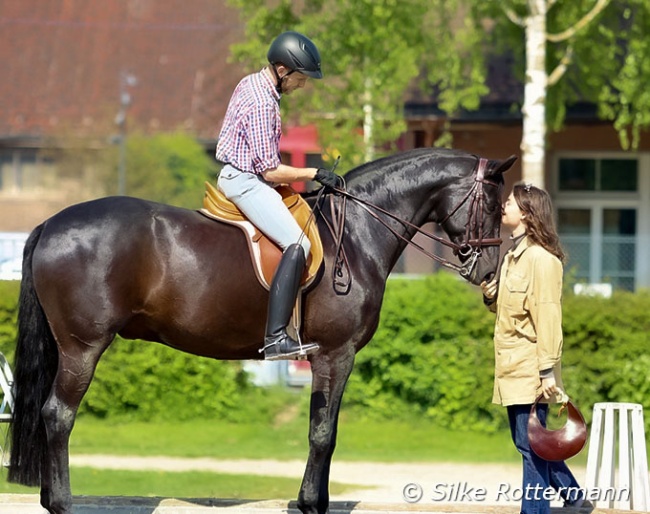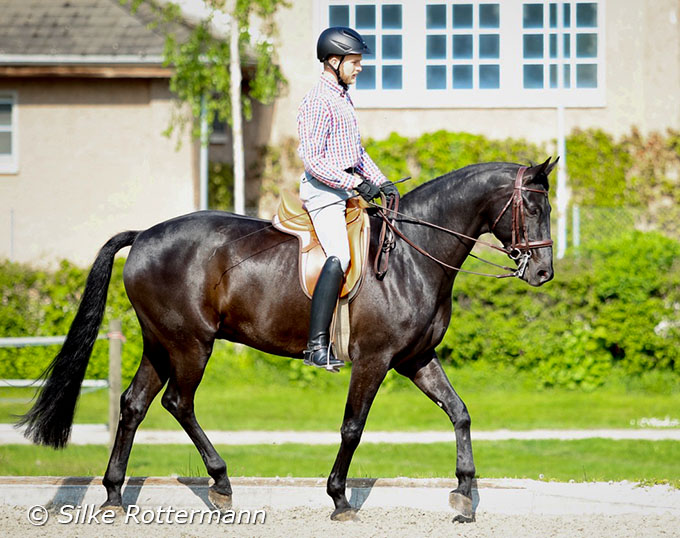
Text and photos by Silke Rottermann for eurodressage.com
Thinking back on what once drew me to dressage when I was a child and when had the least clue about the discipline, it was the impression of freedom and ease with which these elegant horses seemed to float in the most difficult movements.
Still far away was the knowledge whether a piaffe was sitting and diagonal, what a horse in self-carriage is, a tidy flying change, or an extension executed with truly lengthened strides. The beauty of the movements and its effortlessness captured me about 35 years ago and principally never let go again.
Dressage of all equestrian disciplines has another side of the medal which is: the more you learn about it, the more you school your eye, the less you have this carefree attitude. Once you get aware about the finer points of dressage, you almost automatically become a detective of mistakes and basic faults which show up to the highest levels.
While I still get completely blown away by some eventing riders - like German triple Olympic champion Michael Jung being in such perfect harmony with his horses over the most difficult cross-country courses in the world, this original feeling of my childhood days has practically left me in dressage many years ago.

Fanti neither has spectacular movements nor is he (yet) competing at advanced level, but he expresses all that calmness, relaxation and voluntary cooperation which make dressage look that easy and harmonious. I find great joy in watching it.
It is a fluke, because what you cannot see is that it is hard work, let alone for a less blessed horse like Fanti who cannot compare to the outstanding quality of the horses we see in international sport.
Nonetheless, you can hardly detect his efforts because he had been physically and mentally so well prepared for them. This now 8-year-old gelding has been slowly and methodically built up, resulting in muscles being where they should be and in a high degree of losgelassenheit which helps create the impression as if Fanti is doing it all on his own accord.

in his work, otherwise neither the rider nor the horse would
be able to give an elegant performance'
It's delightful to see that Fanti (by Frascino) is no different at a dressage show, demonstrating the lightness and ease like at home. And it is even more encouraging to see that judges acknowledge this different way of going compared to those dressage horses who are dominated by negative tension and have lost their spark.
The season 2025 is still young, but Fantastico has already placed three times 3rd at elementary level and gained his first placing in his second medium level class he ever attended.
I am aware that photos are just moments in time and not always transfer what one sees or feels while watching a horse in person, but I hope I captured at least a bit what I described in this piece: A horse enjoying the partnership with his rider.

chewing muscle and are correctly bend at the poll don’t
need a cranked noseband'
Quotes taken from:
- Udo Bürger, Vollendete Reitkunst, Verlag Paul Parey, Berlin und Hamburg 1959, pages 39, 55, 57, 80, 104 and 127.
- General A. Decarpentry, Academic Equitation, J.A. Allen, London 1971, pages 8, 16 and 203.
- Dr. H.L.M. van Schaik, Misconceptions and Simple Truths in Dressage, J.A. Allen, London 1986, pages 59 and 63.
- Richard L. Wätjen, Das Dressurreiten, Verlag Paul Parey, Berlin and Hamburg 1966, pages 69 and 75.
- Henri Wynmalen, Dressage - The Study if the Finer Points of Riding, Museum Press Limited, London 1958, page 30.
Read the complete "Fanti's Progress" series about classical dressage training
Fanti's Progress - Part I: What Good Dressage Training Can Do to a Horse
Fanti's Progress - Part II: "The Rider Must Control Himself Before He Can Control His Horse"
Fanti's Progress - Part III: "Taking a Step Up While Refining the Basics"
Fanti's Progress - Part IV: A Three-Day Training Stint with Anja Beran
Fanti's Progress - Part V - Why Compete Today if You Want to Be a Classical Dressage Rider?